 A statue of St. Joseph and baby Jesus is seen inside a damaged church in the village of St. Elia central Italy following a strong earthquake, Monday, April 6, 2009. A powerful earthquake in mountainous central Italy knocked down whole blocks of buildings early Monday as residents slept, killing more than 70 people in the country's deadliest quake in nearly three decades, officials said. Tens of thousands were homeless and 1,500 were injured.(AP Photo/Gregorio Borgia)
A statue of St. Joseph and baby Jesus is seen inside a damaged church in the village of St. Elia central Italy following a strong earthquake, Monday, April 6, 2009. A powerful earthquake in mountainous central Italy knocked down whole blocks of buildings early Monday as residents slept, killing more than 70 people in the country's deadliest quake in nearly three decades, officials said. Tens of thousands were homeless and 1,500 were injured.(AP Photo/Gregorio Borgia) L'AQUILA, Italy-A powerful earthquake in mountainous central Italy knocked down whole blocks of buildings early Monday as residents slept, killing more than 90 people in the country's deadliest quake in nearly three decades. Tens of thousands were homeless and 1,500 were injured.Ambulances screamed through the medieval city L'Aquila as firefighters with dogs and a crane worked feverishly to reach people trapped in fallen buildings, including a dormitory where half a dozen university students were believed still inside.Outside the half-collapsed building, tearful young people huddled together, wrapped in blankets, some still in their slippers after being roused from sleep by the quake. Dozens managed to escape as the dorm walls fell around them but hours after the quake, a body of a male student was pulled from the rubble. "We managed to come down with other students but we had to sneak through a hole in the stairs as the whole floor came down," said student Luigi Alfonsi, 22. "I was in bed — it was like it would never end as I heard pieces of the building collapse around me.""There was water gushing out of broken water pipes, and the corridor which led to the stairs was partially blocked when a piece of the wall came down," Alfonsi, his eyes filling with tears and his hands trembling, told The Associated Press.The quake has also taken a severe toll on the city's prized architectural heritage. L'Aquila was built as a mountain stronghold during the Middle Ages and has many prized Romanesque, Gothic and Renaissance buildings.Parts of many of the ancient churches and castles in and around the city have collapsed. Centuries-old churches in many isolated villages in the area are believed partly collapsed, and damage to ancient monuments has been reported as far as Rome.L'Aquila, capital of the Abruzzo region, was near the epicenter about 70 miles (110 kilometers) northeast of Rome. It is a quake-prone region that has had at least nine smaller jolts since the beginning of April. The quake struck at 3:32 a.m. The U.S. Geological Survey said the big quake was magnitude 6.3, but Italy's National Institute of Geophysics put it at 5.8 and more than a dozen aftershocks followed.More than 90 people were killed and the death toll was likely to rise, civil protection chief Guido Bertolaso said as rescue crews clawed through the debris of fallen homes. Some 1,500 people were injured.The quake hit 26 towns and cities around L'Aquila,which lies in a valley surrounded by the Apennine mountains.Castelnuovo, a hamlet of about 300 people 15 miles (25 kilometers) southeast of L'Aquila, appeared hard hit, and five were confirmed dead there. Another small town, Onno, was almost leveled."A few houses have remained standing, but just a few," Stefania Pezzopane, provincial president of L'Aquila, told Corriere della Sera. Rescue workers in Onna, population about 250, said the town was virtually deserted as survivors sought shelter elsewhere.The four-star, 133-room hotel Hotel Duca degli Abruzzi in L'Aquila's historic center was heavily damaged but still standing it was not known if there were any casualties, said Ornella De Luca of the national civil protection agency in Rome. "The information is very fragmentary," she said.L'Aquila Mayor Massimo Cialente said about 100,000 people were homeless. It was not clear if the mayor's estimate included surrounding towns. Some 10,000 to 15,000 buildings were either damaged or destroyed, officials said.Premier Silvio Berlusconi declared a state of emergency, freeing up federal funds to deal with the disaster, and canceled a visit to Russia so he could deal with the quake crisis.Condolences poured in from around the world, including from President Barack Obama, Pope Benedict XVI and Abdullah Gul, president of quake-prone Turkey.Slabs of walls, twisted steel supports, furniture and wire fences were strewn about the streets of L'Aquila, and gray dust carpeted sidewalks, cars and residents.Residents and rescue workers hauled away debris from collapsed buildings by hand or in an assembly lines, passing buckets. Firefighters pulled a woman covered in dust from the debris of her four-story home.Rescue crews demanded quiet as they listened for signs of life from other people believed still trapped inside.Elsewhere, a man dressed only in his underwear wept as he was pulled from the debris and embraced.A body lay on the sidewalk, covered by a white sheet.Parts of L'Aquila's main hospital were evacuated because they were at risk of collapse, and only two operating rooms were in use.Bloodied victims waited in hospital hallways or in the courtyard and many were being treated in the open. A field hospital was being set up.In the dusty streets, as aftershocks rumbled through, residents hugged one another, prayed quietly or frantically tried to call relatives. Residents covered in dust pushed carts full of clothes and blankets that they had thrown together before fleeing their homes."We left as soon as we felt the first tremors," said Antonio D'Ostilio, 22, as he stood on a street in L'Aquila with a huge suitcase piled with clothes. "We woke up all of a sudden and we immediately ran downstairs in our pajamas."Evacuees converged on an athletics field on the outskirts of L'Aquila where a makeshift tent camp was being set up. Civil protection officials distributed bread and water to people who lay on the grass next to heaps of their belongings "It's a catastrophe and an immense shock," said resident Renato Di Stefano, who was moving with his family to the camp as a precaution. "It's struck in the heart of the city, we will never forget the pain." The Culture Ministry said a wall of the 13th century Santa Maria di Collemaggio church collapsed and the bell tower of the Renaissance San Bernadino church also fell. The 16th castle housing the Abruzzo National Museum was damaged.This was Italy's deadliest quake since Nov. 23, 1980, when one measuring 6.9-magnitude hit southern regions, leveling villages and causing some 3,000 deaths.Many modern structures in Italy over recent decades have failed to hold up to the rigors of quakes along Italy's mountainous spine, or in coastal cities like Naples. Despite warnings by geologists and architects, some of these buildings have not been retrofitted in terms of seismic safety.Pezzopane, the provincial president, said residents may have been lulled into complacency because so many smaller quakes had jolted the area, including two or three earlier in the night."Considering what happened, a bit more concern, more attention might have saved lives," she said.National officials insisted no quake can ever be predicted and that no evacuation could have been ordered on the basis of the recent jolts."There is no possibility of making any predictions on earthquakes. This is a fact in the world's scientific community," Civil protection chief Guido Bertolaso told reporters.The last major quake to hit central Italy was a 5.4-magnitude temblor that struck the south-central Molise region on Oct. 31, 2002, killing 28 people, including 27 children who died when their school collapsed.
By MARTA FALCONI, Associated Press Writer
By MARTA FALCONI, Associated Press Writer
As in the days of Noah...
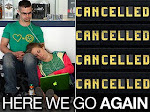
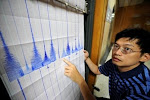
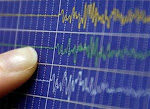
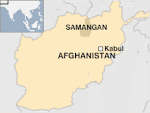







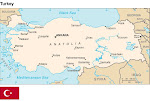
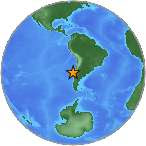




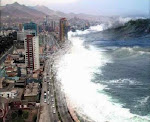

.jpg)

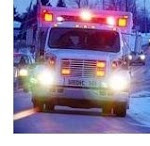
.bmp)
No comments:
Post a Comment